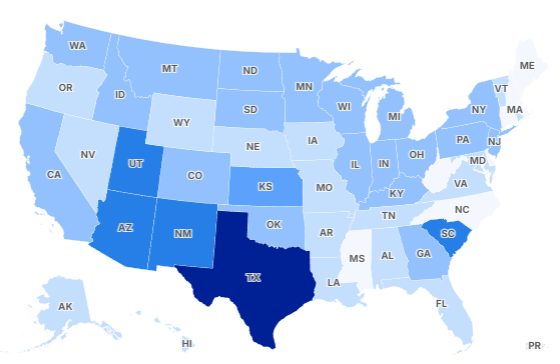A groundbreaking discovery from researchers at National Taiwan University may revolutionize the way we tackle hair loss, potentially offering a simple topical solution that works in as little as 20 days. With hair loss affecting over 80 million Americans, this breakthrough could signal a major shift away from invasive procedures like hair transplants and offer hope to millions seeking to restore their youthful locks.
Hair loss, medically referred to as androgenetic alopecia, is the most common form of the condition, particularly among men. Statistics indicate that roughly two-thirds of men will experience noticeable hair thinning by the age of 35, and by age 50, as many as 85% may show some degree of hair loss. For women, while the progression is often slower, hair thinning remains a significant concern, with considerable emotional and psychological impact.
Currently, options for addressing hair loss are limited. Many turn to hair transplants, which involve surgically moving hair follicles from one area of the scalp to another. While generally considered safe, transplants are not without risk. The National Institutes of Health (NIH) notes that potential complications include itching, dissatisfaction with results, infection, wound dehiscence, and even skin necrosis in rare cases. For many, these risks, coupled with high costs, make surgical intervention less appealing.
Enter the research team at National Taiwan University, who have developed a serum designed to be applied topically to the skin. Their work, published in Cell Metabolism, demonstrates remarkable results in laboratory mice. By stimulating fat cells within the skin, the serum encourages the regeneration of hair follicles, essentially kickstarting new hair growth in areas affected by baldness.
The serum is composed of naturally derived fatty acids, which the researchers emphasize are gentle on the skin. Unlike traditional chemical treatments that can cause irritation or allergic reactions, these fatty acids are designed for safe topical use, potentially paving the way for an over-the-counter product.
Professor Sung–Jan Lin, the lead author of the study, shared his personal experience with the serum. According to an interview with New Scientist, he applied the fatty acids dissolved in alcohol to his thighs for three weeks and observed noticeable hair regrowth. This hands-on testing underlines the team’s confidence in the serum’s effectiveness and safety.
The mechanism behind this breakthrough is rooted in an interesting biological phenomenon: hypertrichosis, the excessive growth of hair following skin injury or irritation. In their experiments, the researchers induced mild eczema on shaved patches of mice skin using the chemical irritant sodium dodecyl sulfate (SDS). Within just ten days, new hair follicles began to sprout in these treated areas, while untouched or untreated regions showed no growth.
Further analysis revealed that the irritation prompts immune cells to migrate into the subcutaneous fat layer beneath the skin. These immune cells then trigger fat cells to release fatty acids, which are absorbed by hair follicle stem cells, stimulating hair growth. Essentially, the body’s natural immune response to irritation was harnessed to kickstart the regeneration of hair follicles.
Recognizing that deliberate skin irritation is not a practical treatment for humans, the team went a step further. They developed a version of the fatty acid serum that eliminates chemical irritants entirely, yet still promotes robust hair growth with minimal side effects. This refinement increases the potential for human application and sets the stage for clinical trials.
The next phase of research involves testing the serum on human scalps to determine optimal dosages and confirm efficacy. If successful, this could be a monumental advancement in dermatology and cosmetic science, offering a non-invasive, accessible solution for hair loss sufferers.
The study’s authors are optimistic about the potential impact. They note that the combination of experimental results, the natural origin of the fatty acids, and their established safety profile suggest considerable promise for treating hair loss conditions in the future.
This discovery is particularly significant given the limitations of current hair regrowth treatments. Over-the-counter options like minoxidil require daily application and often deliver inconsistent results, while prescription medications such as finasteride can come with a host of potential side effects, including sexual dysfunction and mood changes. The Taiwanese serum, by contrast, promises a natural, safe, and potentially faster-acting alternative.
Beyond its medical implications, the breakthrough could also have significant social and psychological benefits. Hair loss can affect self-esteem, social confidence, and overall quality of life. A reliable topical treatment could alleviate some of the emotional burdens associated with thinning hair, giving individuals renewed confidence in their appearance.
Researchers caution, however, that while results in mice are promising, human trials are essential to fully assess efficacy, optimal application methods, and any long-term effects. The complexity of human hair growth cycles, hormonal influences, and individual variability means that outcomes may differ from those observed in laboratory settings.
Despite these caveats, the potential for a quick-acting, safe, and non-invasive hair regrowth solution has generated excitement in both scientific and consumer circles. Should the serum successfully transition from laboratory research to market-ready product, it could reshape the hair care and cosmetic industry, offering millions a practical solution to a problem that has long defied easy remedies.
In addition to its cosmetic appeal, the serum may also contribute to a better understanding of the biology of hair growth and the interplay between immune cells, fat cells, and stem cells. This knowledge could have broader implications for regenerative medicine, wound healing, and dermatological research, opening new avenues for treatment of other skin and hair disorders.
Professor Lin’s approach—leveraging the body’s natural immune response without causing harmful side effects—demonstrates a shift in how scientists are approaching hair regeneration. Rather than relying solely on transplants, chemicals, or invasive procedures, the focus is moving toward treatments that activate the body’s inherent regenerative capabilities.
As the research progresses, the scientific community and public alike will be watching closely. The promise of a topical serum that can restore hair in just 20 days captures the imagination and represents hope for millions affected by hair loss. With continued testing and eventual regulatory approval, this breakthrough could mark a turning point in hair restoration science.
In conclusion, the discovery of a fatty acid-based serum capable of stimulating hair regrowth in as little as 20 days is a potentially transformative development in the treatment of hair loss. Backed by promising preclinical results, the natural formulation and non-invasive application make it an attractive alternative to current therapies. While human trials are still forthcoming, the research offers a glimpse of a future where hair loss could be addressed safely, effectively, and without surgical intervention. If successful, this innovation could redefine how hair restoration is approached, offering hope and renewed confidence to millions worldwide.
The coming months will be critical as researchers prepare for clinical trials, optimize dosages, and assess safety on human scalps. Should the results mirror those seen in mice, the implications are vast, not just for aesthetics, but for the psychology and well-being of individuals struggling with hair loss. This breakthrough represents an exciting chapter in dermatological science—one that could make invasive procedures and long-term chemical treatments a thing of the past.
The discovery also highlights the growing role of regenerative medicine and immunology in everyday cosmetic and medical treatments, signaling a new era where harnessing the body’s natural healing mechanisms may provide elegant solutions to longstanding problems like hair loss.
With anticipation mounting, the world waits to see whether this 20-day hair growth solution will live up to its promise and finally offer a safe, effective, and widely accessible answer to one of the most common cosmetic concerns globally.

Emily Johnson is a critically acclaimed essayist and novelist known for her thought-provoking works centered on feminism, women’s rights, and modern relationships. Born and raised in Portland, Oregon, Emily grew up with a deep love of books, often spending her afternoons at her local library. She went on to study literature and gender studies at UCLA, where she became deeply involved in activism and began publishing essays in campus journals. Her debut essay collection, Voices Unbound, struck a chord with readers nationwide for its fearless exploration of gender dynamics, identity, and the challenges faced by women in contemporary society. Emily later transitioned into fiction, writing novels that balance compelling storytelling with social commentary. Her protagonists are often strong, multidimensional women navigating love, ambition, and the struggles of everyday life, making her a favorite among readers who crave authentic, relatable narratives. Critics praise her ability to merge personal intimacy with universal themes. Off the page, Emily is an advocate for women in publishing, leading workshops that encourage young female writers to embrace their voices. She lives in Seattle with her partner and two rescue cats, where she continues to write, teach, and inspire a new generation of storytellers.









